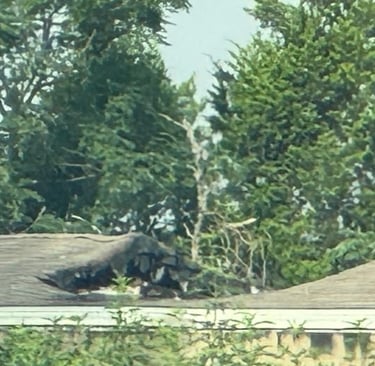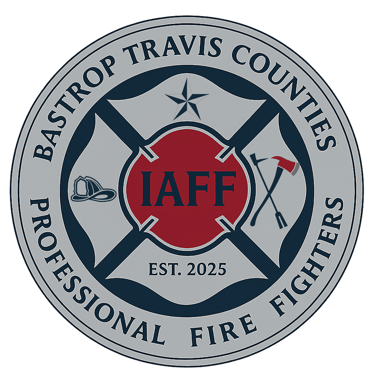What Stays With You: McDade, TX Fire Call
A personal account of a call
STORIES FROM THE FIREGROUND
BTCAPFF
7/28/20254 min read


Editor’s Note: The following is a firsthand account written by BTCAPFF President Kaden Eckhart. It’s not shared to elevate one firefighter’s actions, but to pull back the curtain on what many of us face in the line of duty often without recognition, resources, or relief. This story is a reflection, not a report.
⚠️ Content Warning: This post contains graphic descriptions related to fireground trauma, injury, and death, including that of a child. Reader discretion is advised.
Sunday Morning’s Fire Call – McDade, TX
By Kaden Eckhart
On the morning of 7/27/25 around 8:42 AM, Engine 6 was dispatched to a structure fire in McDade, TX. I was riding as officer, with Nicholas Jones driving. The GPS said 2 minutes from station to scene, and it was. Two minutes. Two minutes isn’t enough time to breathe, let alone mentally prepare to take command of a rescue and fire attack with just two people. I barely had my gear on before we were turning onto the street. I’d managed to get a mutual aid request out to ESD2, but that was it. The rest had to happen on the fly.
We arrived to find a single-wide manufactured home with thick black smoke already pushing from the eaves and roof. Dispatch had said there might be someone inside. That was confirmed pretty much instantly. I pulled a hoseline and ran to the Charlie side of the house. That’s where I found a woman outside the home, completely frantic, screaming into a broken window that her son was still inside.
She was cut up badly from the glass, covered in blood, and leaning halfway into the window. The busted AC unit she’d been standing on was already on the ground. She kept yelling, “He’s dead! He’s dead!” I told her to go to the front to wait for help. Instead, she laid down in what was left of a busted above-ground pool probably trying to cool off. I didn’t have time to deal with her any further.
Right next to that room, the fire was blowing out of a window and the roof. There was no going through the front door. I ran to the B/C corner and shouted to a Bastrop County deputy that I needed a ladder and a halligan. Deputy and Tender 6 driver Clayton Calhoun brought a 24-foot ladder. I climbed up to the window, finished breaking out the remaining sash, and checked the floor with my fist before going in. I needed to know it wouldn’t collapse under me as I was going in alone. No backup. No RIT team. If it went bad, there’d be no one there to pull me out.
Visibility was zero. Couldn’t see my hand in front of my face. I started to move in, and that’s when large panels of Sheetrock started falling on me. It was heavy, full of insulation, and hot enough I could feel it burning on my neck through my gear. I backed out. I hated it, but I had to choose surviving over pushing blind into a room with a collapsing ceiling and no visibility.
Outside, I flaked the line and requested water. I started cooling the room from the window. Nick suited up and went in through the same window on the nozzle, and I followed in to start the search. The layout was not normal with a mattress, couch, and coffee table all jammed in tight right in front of the window. Nick was spraying through a burned-down interior wall while I worked the search. That’s when I spotted a limb sticking out from a pile of debris.
He looked around 8 to 12 years old. Unconscious. Limp. I called Nick over to help me carry him maybe 5-8 feet to the ladder. Then I straddled the kid and gave him a full bear hug, lifted him to the window, and handed him off to Hunter from Engine 1, who was on the ladder.
At that point, my low-air alarm was going off. I told Nick we were done inside. We both exited out the same window and went into rehab. Between the heat inside and Texas summer, we were spent. We helped EMS, the flight medics, and ESD2’s mutual aid engine get the boy loaded onto the stretcher and into the ambulance. The house was still burning, but somehow still standing by the end which is rare for a trailer, and I believe only possible because of the early push we made.
Sadly, the boy was pronounced dead at the hospital.
I keep thinking about it. I didn’t use my FLIR. I went in alone. I didn’t have a full plan. But with two people on scene, and no real help for 10 more minutes, you miss steps. There’s no checklist when a kid’s dying behind that smoke. You move, you do your best, and you try not to die doing it.
Still… I can’t help but wonder what I could’ve done differently. It’s hard not to. But I know this:
I showed up. I went in. I made the calls I had to -- and I carried that boy out.
This is the part of the job people don’t see. The part where no matter how fast, strong, or ready you are… you still lose.


